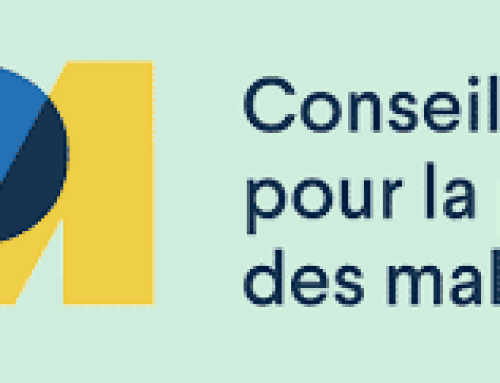In the first of this two-part series, we discussed what parents can do when they suspect their child might have a problem that needs professional intervention. We explored the importance of seeking an evaluation in order to give the problem a name (the diagnosis) and in order to understand how the problem gives rise to your child’s unique combination of strengths and weaknesses.
I have a diagnosis. Now what?
Once you have arrived at a diagnosis for your child, the next step is to begin seeking interventions or therapies to treat the problem. Depending upon your child’s diagnosis, you may discover an overwhelming number of treatment options. And very often, proponents of a given treatment will argue convincingly and sincerely that theirs is the best choice. So how’s a parent to decide? Do you listen only to the advice of your child’s doctor or teacher, for example? Do you also turn to your best friend, your mother, a chat room, or that nice lady you met at the new support group? Eastern medicine or western? A change of diet? Vitamins, homeopathic remedies, naturopathic supplements, or pharmaceuticals? What about therapies: ABA? RDI? Speech? OT? Some combination of these? How much is too much? How much is not enough?
If you feel you don’t know which way to turn, take heart. Your reluctance to arbitrarily settle for the first therapy suggested to you without investigating all options simply means that like any concerned parent, you’re aware that the stakes are high – this is your child’s health and happiness you’re taking responsibility for. There’d be more to worry about if you didn’t feel that way!
So who do you listen to? Everyone. That doesn’t mean you have to take everyone’s advice. But it’s good to be aware of all possibilities, even if some are quickly ruled out. The most important voice to listen to, however, is your own – that inner voice telling you when something feels right or wrong.
Develop an individual treatment plan
Your job now is to develop a treatment plan – a set of interventions or therapies designed to help your child achieve short- and long-term goals. While the goals and intervention methods of the plan may change over time, there should always be a Master Plan describing past, present and potential future treatments.
Your first instinct may be to follow a treatment plan that seems to be working for another child. But remember that although two children can have the same diagnosis, each may have a completely different set of strengths and weaknesses. What works for one child may not work for yours.
Nor should you expect any one doctor, therapist, or practitioner to develop and oversee a multi-modal treatment plan (one that encompasses different disciplines) for you. A child with special needs very often needs help in several different areas. And while professionals may be experts in their own fields, they may be no more knowledgeable than you are about the others.
An exception that may be made for one individual to oversee an entire treatment plan would be in the case of a professional whom you have chosen to act as a case coordinator – someone who may advise you and help you to manage your child’s treatment plan.
A case manager may be particularly helpful if you ultimately find yourself juggling a number of different treatments targeting a complex set of problems. At this early stage, however, your first step is to gather all the information and advice that you can from trusted sources, and then start developing an individual treatment plan that makes the most sense for you, your child, and your family, beginning with just one treatment. While this task may seem daunting, there are effective problem solving strategies that can help you make these decisions:
- Identify the problem(s)– Your child probably exhibits a number of symptoms or “problems.” These may include motor, communication or learning problems, among others. Social-emotional behavioural problems are frequently part of the mix as well. Compile a list of them.
- Prioritize– Recognize that you can’t attack everything at once. Number the symptoms or behaviors you’d like to address in order of priority. Remember not only to consider your child with special needs, but the rest of the family as well, when delineating these priorities. Certainly anything of a medically-urgent nature should top your list. Otherwise, addressing a problem that creates stress on everyone in the family might be your first choice, since resolving that issue will free up more time and energy to devote to other problems. Alternatively, your family may be able to cope with the needs of your exceptional child at home, and your priority might be to deal with a problem that’s interfering with your child’s functioning at school.However you choose to rank these problems, don’t let this first step tie you up in knots. You’re not engraving your list in stone; priorities can change. You might start working on the first item on the list, for example, and find it too daunting, or discover there’s a long waiting list for a particular intervention. In that case, you’d want to move on to the next item. The point is just to get started. Whether you’re heading down one path or another isn’t as important as taking those first steps.
- Break the problem down into smaller parts– If the problem is communication-related, for example, you would want to pinpoint exactly where the problem lies. Does your child have problem expressing him or herself to others, or understanding what others are communicating? Can your child communicate verbally but is incapable of expressing him or herself non-verbally, or the reverse? Once you have clearly dissected the problem, you’re ready to take it on.
- Identify treatment options– Use the internet, talk to friends and professionals, and contact community support groups and national organizations in order to research potential treatment options for your child’s particular issue(s). Get as much information as you can – good, bad, and ugly. Exactly what does the treatment or therapy entail? What results are realistically achievable? What are the risks? At what point might you expect to see results (or determine that this therapy is not working)? Is it available in your area? What does it cost? What kind of time commitment does it entail?Regardless of how successful the program may have been with other children, does it make sense for yours? Although the treatment may have been designed to address a problem your child has, the same problem may have several potential causes and the program may be more successful treating some causes over others. Or your child might have a secondary problem that would prevent him or her from reaping the full benefit of this particular treatment.Whenever possible, and certainly when it’s an option you’re seriously considering, try to arrange to meet with your child’s potential therapist or practitioner together with your son or daughter. It’s as important for them to learn about your child as it is for you to learn about their program. After meeting one another and interacting for a period of time, both of you should have a better indication whether this seems like the right fit.
- Select a treatment or therapy– At this stage, you might have a number of options to choose from. While in the future your child might engage in two or more treatments concurrently, for now you should just begin with one.If you have trouble deciding between various options, you may find it helpful to draw up a list of pros and cons associated with each option. Write down everything you can think of, from the most minor consideration to the most significant. Assign every item on the list a value from 1-5, representing how much weight it should carry in the final decision. For example, a therapy that carries a significant risk would belong in the cons column, with a higher score than you’d give to a treatment that at the very worst could do no harm.Now add up the scores. Subtract the total in the cons column from the total in the pros column. If the cons outweigh the pros, it will be a negative number. That option would clearly not be your first choice, and you may even wish to eliminate it from the list of potential treatments. The option with the highest positive number is probably the one you will want to try first.
- Give it a fair shot, then assess– In Steps 4 and 5, you established the goals you wished to achieve from this treatment and learned how long it might take to see results, or to ascertain that the treatment isn’t effective. Reaching such a conclusion isn’t an exact science and children often respond at different paces, but at some point you’ll probably have a good idea whether you want your child to continue this treatment, or try another intervention.
- Rinse and repeat– At this stage, you might choose to switch to another treatment or decide to add a second one, by retracing the above steps. This process may continue for years, adding and subtracting programs and therapies as your child reaches new milestones, new treatments emerge, or new challenges present themselves. As mentioned earlier, eventually your child may be benefiting from several simultaneous treatments. But it’s always preferable to add them gradually, one at a time, so you can make an accurate assessment of which treatment is responsible for which improvement – or if one is making no difference at all.
By following these steps, you should soon start to feel confident in your ability to develop and maintain a treatment plan that will reap benefits for both your child with special needs and your family as a whole, for years to come.
Sidebar:
Treatments and therapies don’t all have to constitute intensive sessions of hard work. Therapies that do nothing more than make your child feel good about him or herself have a place in your child’s treatment plan too. One mother I know includes regular “salon therapy” sessions for her daughter, in which she’s pampered at local salon – an experience her mother describes not only as a confidence booster for her child, but also one that yields more joy for her daughter than any of her formal treatments.
© Harriet Greenstone, MA, OPQ, PhD




